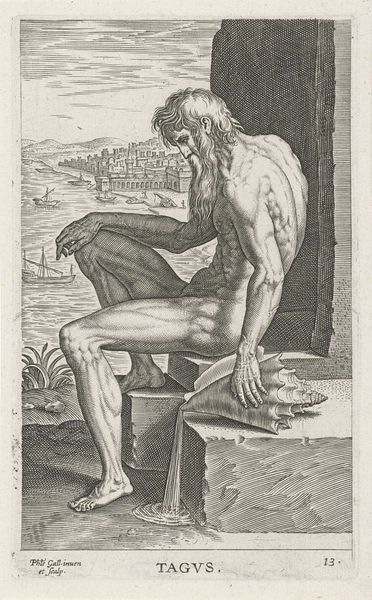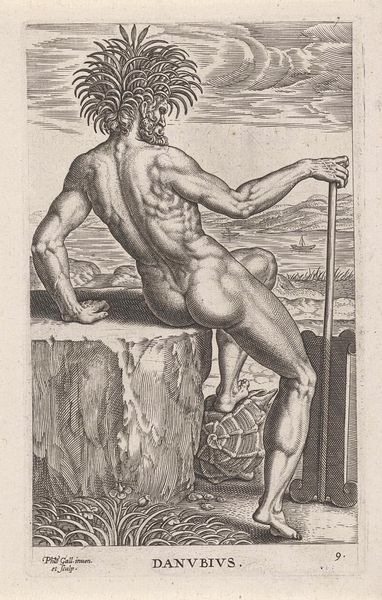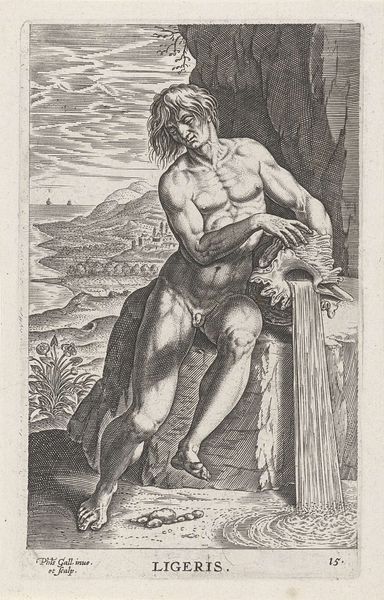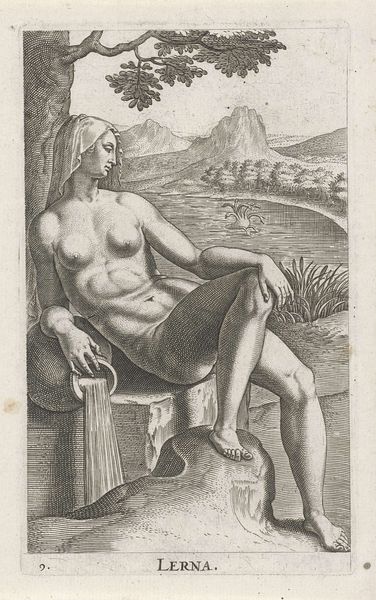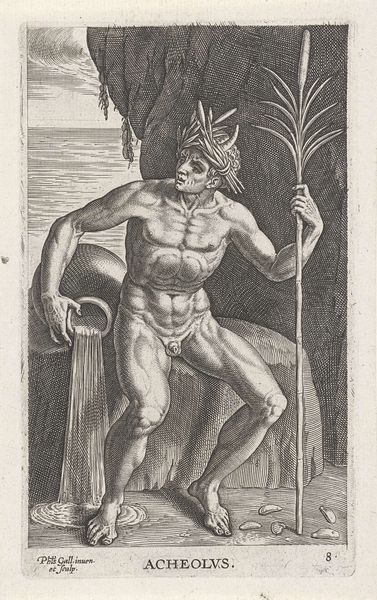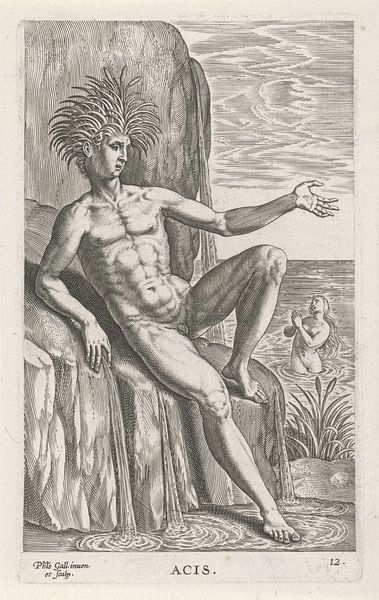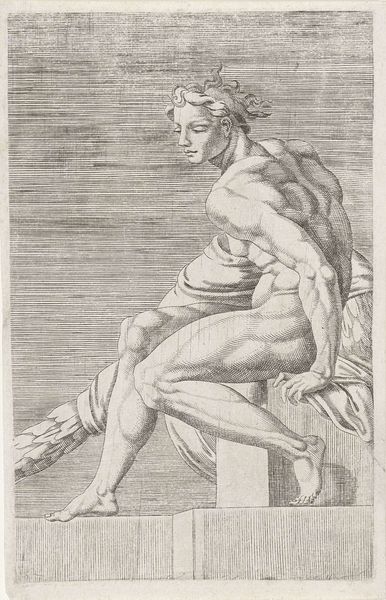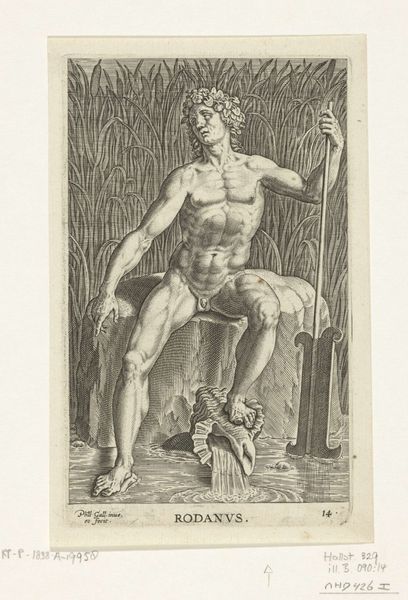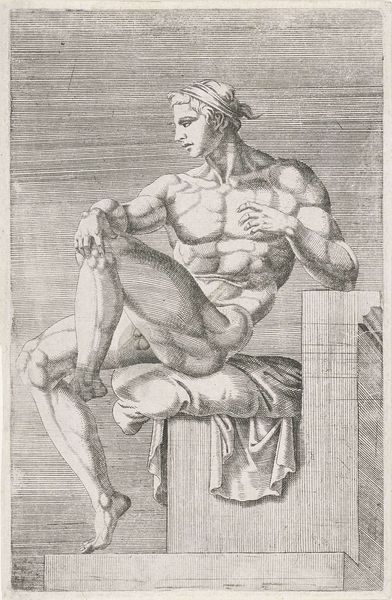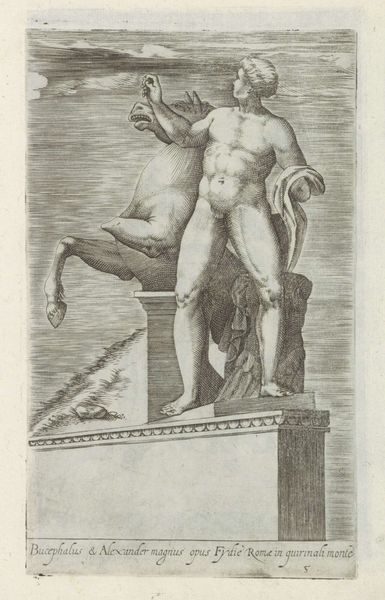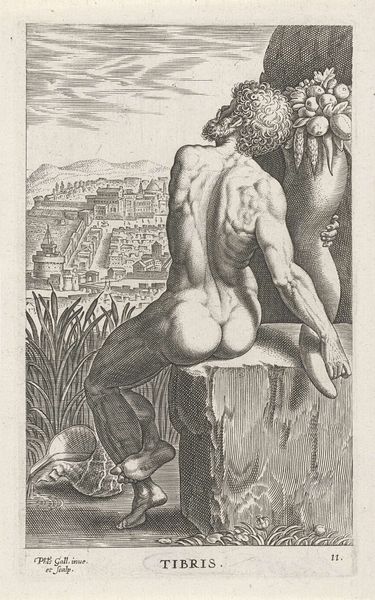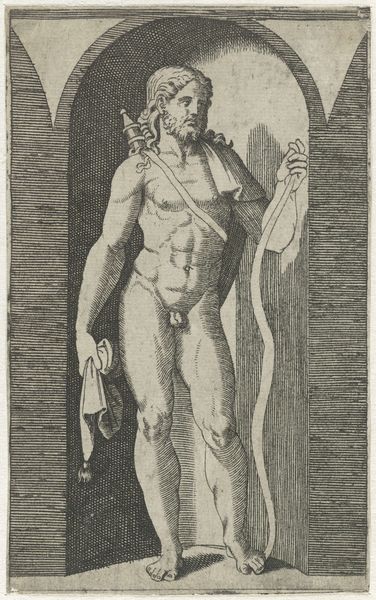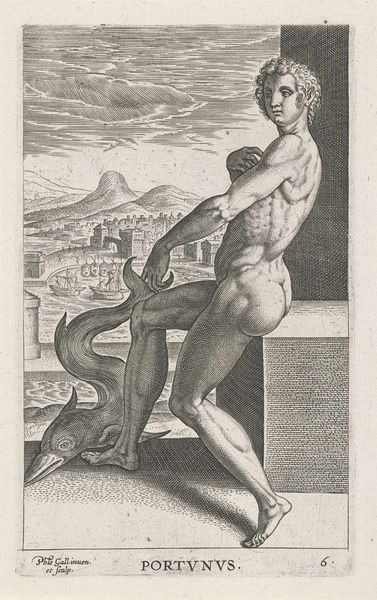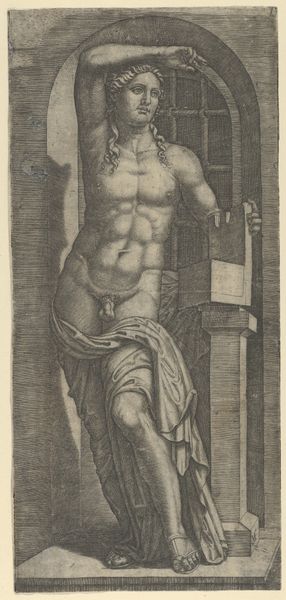
#
pencil drawn
#
light pencil work
#
pencil sketch
#
personal sketchbook
#
idea generation sketch
#
pen-ink sketch
#
limited contrast and shading
#
sketchbook drawing
#
portrait drawing
#
pencil work
Dimensions: height 165 mm, width 102 mm
Copyright: Rijks Museum: Open Domain
Philips Galle created this print of the Riviergod Scaldis using engraving techniques. It’s a masterful demonstration of how a humble material – a copper plate – can be coaxed into producing an image of immense detail. The image's visual impact owes much to the artist's ability to manipulate the metal, using tools to incise lines that hold ink, and create an image when pressed against paper. Look closely, and you’ll see how the varying density and direction of these lines describe the textures of the god's skin, the flowing water, and the architectural details of the city in the background. The cross-hatching creates shading and volume, giving depth to the scene. But beyond the technical skill, this print also speaks to the rise of printmaking as a crucial industry in early modern Europe. Prints like these were not just aesthetic objects, but commodities, produced in multiples and circulated widely, spreading ideas and images across geographical boundaries. The labor-intensive process of engraving reflects the economic and cultural transformations of the period, where skilled craftsmanship met the demands of a burgeoning market.
Comments
No comments
Be the first to comment and join the conversation on the ultimate creative platform.
